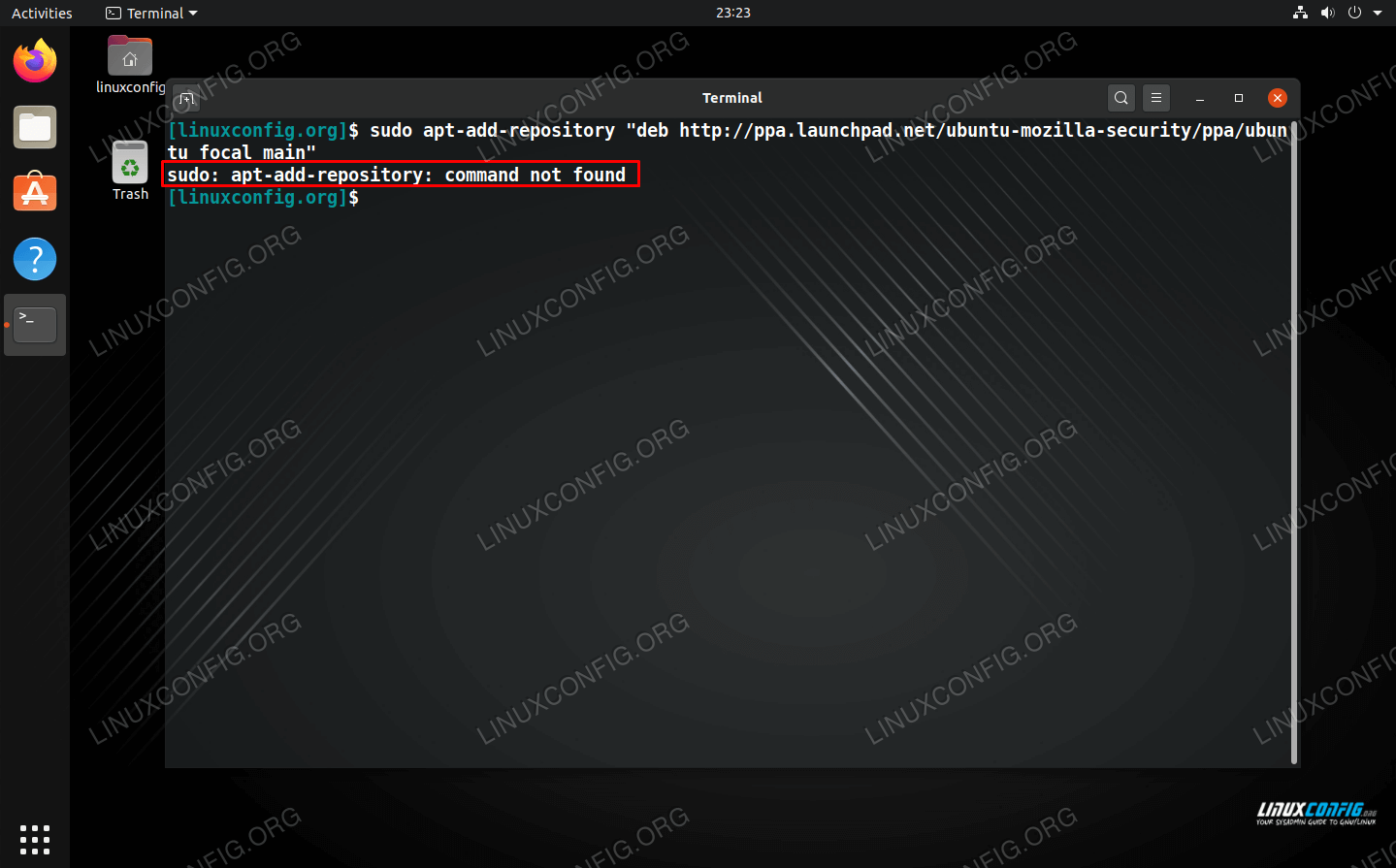

The context includes the Dockerfile and any files that are copied into the image. This command builds a Docker image named my_appusing the current directory (denoted by. # Specify a command to run the application
Dockerfile sudo command not found install#
RUN apt-get update & apt-get install -y python3

# Copy files from your local system to the container Here are some of the key instructions that you might use: # Use an existing image as the base
Dockerfile sudo command not found series#
Setting up your Dockerfile correctly is a crucial step in building efficient and effective Docker images.Ī Dockerfile is composed of a series of instructions and arguments. A Dockerfile is a text document that contains all the commands a user could call on the command line to assemble an image. It's a good practice to use version numbers as tags to keep track of different versions of your image.īefore diving into the docker build -t command, it's essential to have a well-structured Dockerfile. This allows for better organization and versioning of your Docker images. In this command, my_repois the repository name and v1.0is the tag. The basic structure of the command is as follows: docker build -t The -t flag is used to tag the image with a meaningful name so that it can be easily identified and managed later. The context is the set of files in the specified PATH or URL. This command is used to build Docker images from a Dockerfile and a "context". The docker build -t command is no exception. In the realm of Docker, understanding the command syntax is pivotal to executing tasks efficiently. For more information, read our affiliate disclosure. If you click an affiliate link and subsequently make a purchase, we will earn a small commission at no additional cost to you (you pay nothing extra). Important disclosure: we're proud affiliates of some tools mentioned in this guide.

Let's explore how this command works and its significance in the Docker ecosystem. The docker build -t command is a fundamental tool in this process, allowing us to tag our images for better organization. Docker offers a streamlined approach to containerization, making it easier for developers to manage and deploy applications.


 0 kommentar(er)
0 kommentar(er)
